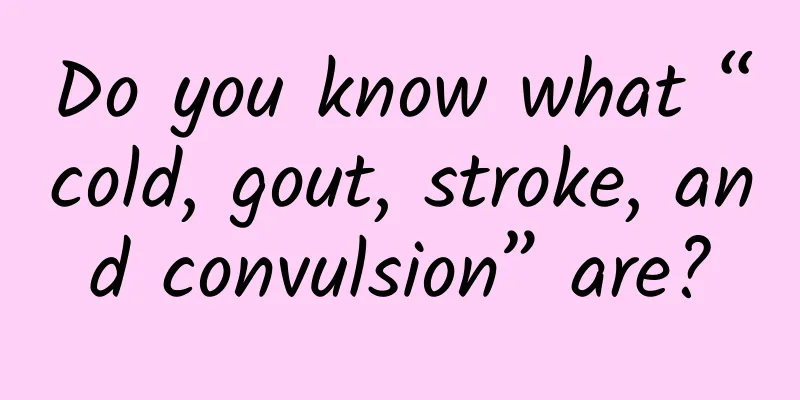Do you know what “cold, gout, stroke, and convulsion” are?

|
Wind is a natural phenomenon caused by air movement. Generally speaking, wind is caused by solar radiation heat. When sunlight shines on the surface of the earth, the surface temperature rises, and the air on the surface expands due to the heat, becomes lighter, and rises. According to the mass continuity condition, after the hot air rises, the low-temperature cold air flows in horizontally. The rising air gradually cools and becomes heavier, and falls. Due to the high surface temperature, the air is heated again, causing it to rise. This air movement generates wind. From a scientific point of view, wind usually refers to the horizontal motion component of air. Wind is a vector quantity, including magnitude and direction, which is expressed by wind direction and wind speed (wind force). But for flying, wind also includes a vertical motion component, which is called vertical or lifting airflow. Strong winds are very fast and powerful, strong enough to move objects or change the direction of their movement. However, I don’t know when and where it started, but “wind” has been associated with human illness. The “four winds” I’m going to talk about today – cold, gout, stroke, and convulsion – are incredible examples . Because I’ve written about “four winds” before, and today I’ve slightly revised, supplemented, and reorganized them, so the title is called – Reorganizing “four winds”. Do you know what “cold, gout, stroke, and convulsion” are? 1. Cold Colds are usually caused by several different filterable viruses (including coronavirus, rhinovirus or parainfluenza virus, etc.), which are acute infections of the nose, throat and upper respiratory tract mucosa, which is medically known as acute upper respiratory tract infection. It is generally believed that 90% of cases are caused by viruses, and a few can cause secondary bacterial infections. Colds are usually caused by cold, rain or excessive fatigue, coupled with a decrease in body resistance (which can be understood as the result of an imbalance between action and reaction). If there are no complications, it will generally heal in 3-4 days (reaching a rebalanced state). The word "cold" comes from everyday language. It is not an accurate definition in the field of science and medicine, and should not be confused with the real influenza (abbreviated as "flu"). Influenza is an acute febrile respiratory infectious disease caused by influenza virus. It is transmitted through droplets (which is indeed somewhat related to air flow), and the typical clinical manifestations are sudden chills, high fever, headache, body aches, fatigue and other systemic poisoning symptoms, while respiratory symptoms are milder. The disease is often self-limiting, and the course of the disease is generally 3 to 4 days. Influenza can be fatal to people with poor immunity (mainly infants, young children, and the elderly). After catching a cold, the body will often have a fever and feel cold. When the air is flowing and the wind blows, the body will feel even colder and shiver. Therefore, some people say that colds are caused by the wind, and that a cold will occur when the wind blows after sweating. In fact, there is no scientific basis for this. Feeling cold is the result of a cold, not the cause of a cold . Keeping fit is the only way to prevent colds and flu. In Japanese, "風邪" means cold. The Japanese also associate cold with "wind". It seems that the ancient envoys to the Tang Dynasty really faithfully inherited our "advanced" culture, and they didn't care whether the cold was related to the "wind" of air flow! Let me say a few more words. I was born and raised in the countryside. When I was a child, I often heard the elders say that if you get a cut or bleeding, you must not be blown by the wind and you must cover yourself up tightly, otherwise you will get " tetanus "! Now I think about how ridiculous and scary this is. What's more, when you accidentally get a cut or bleeding while doing farm work, the elders will tell you to sprinkle soil on the wound to stop the bleeding. Now you should understand why we farmers are called "rustic" - the soil is absorbed into our blood! Going a little further, I thought of an idiom: "harming morals and corrupting public morals". "Hurting morals and corrupting public morals" comes from Han Yu's "On the Buddha's Bones" in the Tang Dynasty: "Hurting morals and corrupting public morals, spreading laughter everywhere, is not a trivial matter." This idiom is often used to condemn improper behavior. The "harming morals" here means corrupting social morals. The "wind" here should refer to the stream of consciousness, but it has nothing to do with wind. 2. Gout Gout is a recurrent inflammatory disease caused by increased uric acid in the blood due to increased purine biosynthesis and metabolism, excessive uric acid production or poor uric acid excretion, and deposition of urate crystals in the synovium, bursa, cartilage and other tissues. Its clinical features include characteristic acute arthritis, tophi and interstitial nephritis caused by hyperuricemia and urate crystal deposition; severe cases may lead to joint deformity and dysfunction, often accompanied by uric acid urinary tract stones; it is more common in obese middle-aged and elderly men and postmenopausal women. Hyperuricemia is the main cause of gout. Due to the high concentration of uric acid in the human blood, needle-shaped crystals are formed in soft tissues such as joint membranes or tendons, causing the body's immune system to overreact (sensitize) and cause painful inflammation. Many famous generals and emperors in history suffered from gout, so gout is also called the "emperor's disease" and has always been regarded as a rich disease closely related to "wine and meat". Gout is indeed related to the intake of alcohol (especially beer), meat (especially offal) and seafood. Studies have also pointed out that carbonated drinks and fructose may also cause gout. On the other hand, vitamin C, coffee and dairy products may help prevent the occurrence of gout. Many people say that the name of "gout" originated from Zhu Danxi, one of the four great doctors in the Jin and Yuan dynasties. In fact, this is not true. The fact is that Zhu Danxi's teacher Luo Zhiti created the name of "gout" and established the Danxi School. Its symptoms are: "Pain in the joints of the whole body, quiet during the day and severe at night, like a tiger bite, named Baihu Lijiefeng". Gout is stubborn and difficult to treat, and recurs repeatedly, seriously destroying the physical and mental health of patients and their families, and causing countless patients to fall into a desperate situation where life is worse than death. Perhaps Luo Zhiti named this disease "gout" because the pain felt by patients was so severe that even a gentle breeze would make them feel unbearable . If you have gout, you will hate the wind. However, gout has nothing to do with the "wind" of air flow. 3. Stroke Stroke is also called cerebral infarction, which is acute cerebrovascular disease. Because it usually occurs suddenly, it is also called "cerebrovascular accident". Any disease that causes cerebral blood circulation disorder and brain tissue function or structure damage due to cerebral blood vessel blockage or rupture can be called a stroke. Stroke can be roughly divided into two categories, namely ischemic stroke and hemorrhagic stroke, which refer to ischemia (commonly known as "cerebral infarction") or hemorrhage (commonly known as "cerebral hemorrhage") of the cerebral artery system. Both ischemic stroke and hemorrhagic stroke will cause brain tissue damage of varying scopes and degrees, thus producing a variety of psychiatric and neurological symptoms, which can be life-threatening in severe cases. Many patients will have sequelae after recovery. "Stroke" is a term in traditional Chinese medicine, also known as "stroke". The word "stroke" was first recorded in the book "Huangdi Neijing Suwen" during the Warring States Period more than 2,000 years ago, which called it hemiplegia, fall, thin syncope, big syncope, and cut syncope. The disease was officially named "stroke" in "Jingui Yaolue" written by Zhang Zhongjing in the late Eastern Han Dynasty. There are many different opinions about stroke in traditional Chinese medicine. Probably because the symptoms and onset of this disease are dangerous, unexpected, and the consequences are serious, traditional Chinese medicine figuratively calls it stroke - meaning that the disease is as erratic as the "wind" of air flow, as if it is possessed by a demon. Modern medicine calls stroke "cerebrovascular accident". It is really puzzling why "cerebrovascular accident" and "wind" are linked together and called "stroke" ! 4. Convulsions Seizures, also known as "convulsions" in medicine, are similar to epileptic seizures and are a common emergency in children. During a seizure, the child suddenly loses consciousness, his eyes roll up or stare to one side; the facial muscles or limb muscles become stiff, hard, spasmodic, or twitching constantly, and a seizure can last from a few seconds to a few minutes. During a seizure, in addition to the damage to the brain cells inside the body due to lack of oxygen, it can also cause some external injuries and other complications, so appropriate measures should be taken to prevent these injuries. The causes of convulsions in children are very complex. Common causes can be divided into two categories: febrile convulsions and non-febrile convulsions, depending on whether fever occurs or not. (1) The first category is afebrile convulsions, which means convulsions are not accompanied by fever. It mainly includes two diseases: one is hypocalcemic tetany, which is caused by calcium deficiency in the body and is more common in infants under 1 year old. The other is epilepsy, commonly known as "epilepsy". Others include sequelae of encephalitis, kernicterus, etc. (2) The second category is febrile convulsions, which means convulsions are accompanied by fever. This category also mainly includes two diseases: one is febrile convulsions caused by high fever stimulation and is more common in infants under 3 years old. The other is due to infection of the central nervous system, such as encephalitis, meningitis, etc. Of course, there are other causes, such as poisoning, tumors, etc. In any case, it is difficult to understand how the above symptoms and causes of "convulsions" or "epilepsy" are related to the "wind" of air flow . If we must link the above-mentioned "four winds" with the "wind" of air flow, it is that the above-mentioned "four winds" come and go quickly, are restless and changeable, their nature is light, open, shaking, and can penetrate everywhere; they are very similar to the "wind" that is difficult to touch and has an erratic whereabouts. Looking at the above “four trends”, we can see that: The wind is not wrong. It’s all human fault! If you blame the wind, The disease is secretly happy! Colds, gout, strokes, convulsions—these have nothing to do with wind . For more popular science articles about biomechanics around us, please follow my WeChat public account “Medical Biomechanics” (Medical_biomechanics). Rectify the "Four Winds" - Colds, Gout, Strokes, and Seizures |
Recommend
How to protect the fetus when the endometrium is thin
If the endometrium is relatively thin, you must p...
Can I eat fennel during my period?
Once women enter their menstrual period, they wil...
Will pregnancy spots fade away?
Stretch marks are something that most female frie...
What to do if you have irregular menstruation due to blood deficiency
Most of us women know about irregular menstruatio...
What is the thickness of the normal female endometrium?
Since the country began to open the second child ...
How much does it cost to do B-ultrasound during pregnancy
How much does it cost to do an ultrasound to chec...
What should women eat to treat freckles?
Women often have spots on their faces that affect...
Does foot soaking help with blocked fallopian tubes?
I believe that for a family, giving birth to a he...
Can I drink milk after eating grapefruit? What is the best juice to make with grapefruit?
Grapefruit contains valuable natural vitamin P, r...
What should women do if they have urinary pain? Don't deal with it blindly
Before introducing solutions to female urinary pa...
Is it normal for pregnant women to have cervical mucus?
Cervical plug mucus is a type of cervical mucus t...
When elderly people take amlodipine, the half-life may be 50 hours. Can they take it once every two days?
An elderly friend told Huazi that he had seen an ...
Armpit accessory breast pictures
Axillary breast is really a nightmare for female ...
Protect your kidneys: Three golden habits to stay away from kidney failure
1. Regular work and rest, adequate sleep: Ensurin...
My period is 25 days late and I am not pregnant
If you are not pregnant after your period is dela...






![[Medical Q&A] Can emotional out-of-control also cause myocardial infarction or sudden death?](/upload/images/67f0e319c99f5.webp)


